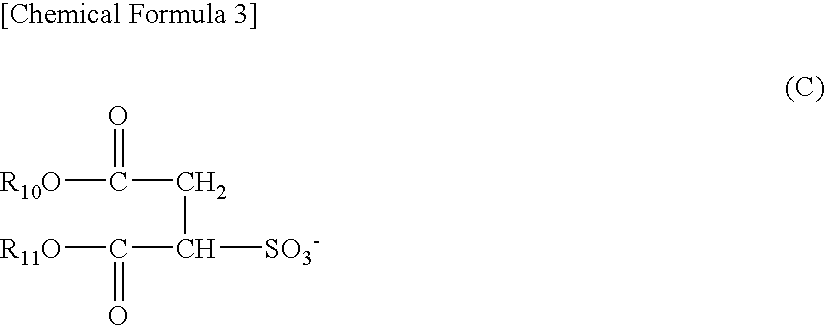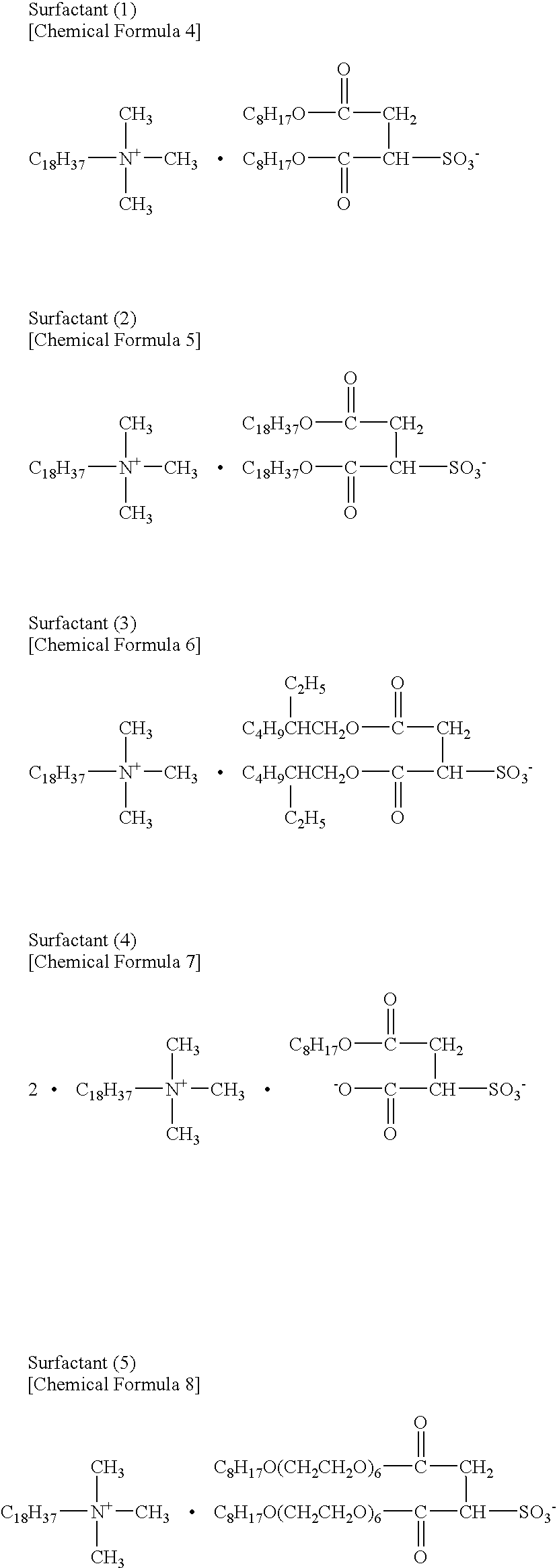Biodegradable resin composition
a technology of biodegradable resin and composition, which is applied in the field of biodegradable resin composition, can solve the problems of affecting the ecosystem, destroying the environment in various ways, and crawling of ink upon printing, and achieves excellent antistatic properties and antifogging properties, and maintains significant molecular weight. , the effect of sufficient strength
- Summary
- Abstract
- Description
- Claims
- Application Information
AI Technical Summary
Benefits of technology
Problems solved by technology
Method used
Image
Examples
examples
[0088]The present invention will be illustrated in further detail with reference to several examples below, which by no means limit the scope of the present invention.
examples 12 to 20
[0095]A series of resin compositions were prepared by subjecting poly(lactic acid) resin (LACEA H-100; available from Mitsui Chemicals, Inc.), any of the surfactants (1) to (3) for use in the present invention, and a compatibilizer in the proportions in Table 2 to melting and kneading in a twin-screw kneading extruder at a die temperature of 160° C. The resulting resin compositions were taken as Examples 12 to 20.
example 21-1
T-Die Extrusion
[0129]Pellets were prepared by melting and kneading a poly(lactic acid) [LACEA H-400 (trade name of the product of Mitsui Chemicals, Inc.)] and 10% by weight of a 25:75 (percent by weight) mixture of Surfactant (1) and the reaction product between boric acid and glycerol monostearate as a compatibilizer. The poly(lactic acid) H-400 as a biodegradable resin (10 kg) and the pellets (0.5 kg) were dry-blended and were molded into a sheet at a melting temperature of 210° C. to 230° C. using a T-die extruder equipped with a dehumidification dryer. The sheet has a thickness of 200 μm, a molecular weight retention of 96.8%, a specific surface resistance of 12.3 and a half-life of 10 seconds. Next, the sheet was heated in an oven at set temperatures of 70° C. to 75° C. for one minute, was stretched 3.0 times in vertical direction and 3.0 times in crosswise direction, and was heated to 150° C., followed by heat setting at 150° C. for one minute. The resulting film has a thickne...
PUM
| Property | Measurement | Unit |
|---|---|---|
| temperature | aaaaa | aaaaa |
| humidity | aaaaa | aaaaa |
| temperature | aaaaa | aaaaa |
Abstract
Description
Claims
Application Information
 Login to View More
Login to View More - R&D
- Intellectual Property
- Life Sciences
- Materials
- Tech Scout
- Unparalleled Data Quality
- Higher Quality Content
- 60% Fewer Hallucinations
Browse by: Latest US Patents, China's latest patents, Technical Efficacy Thesaurus, Application Domain, Technology Topic, Popular Technical Reports.
© 2025 PatSnap. All rights reserved.Legal|Privacy policy|Modern Slavery Act Transparency Statement|Sitemap|About US| Contact US: help@patsnap.com



